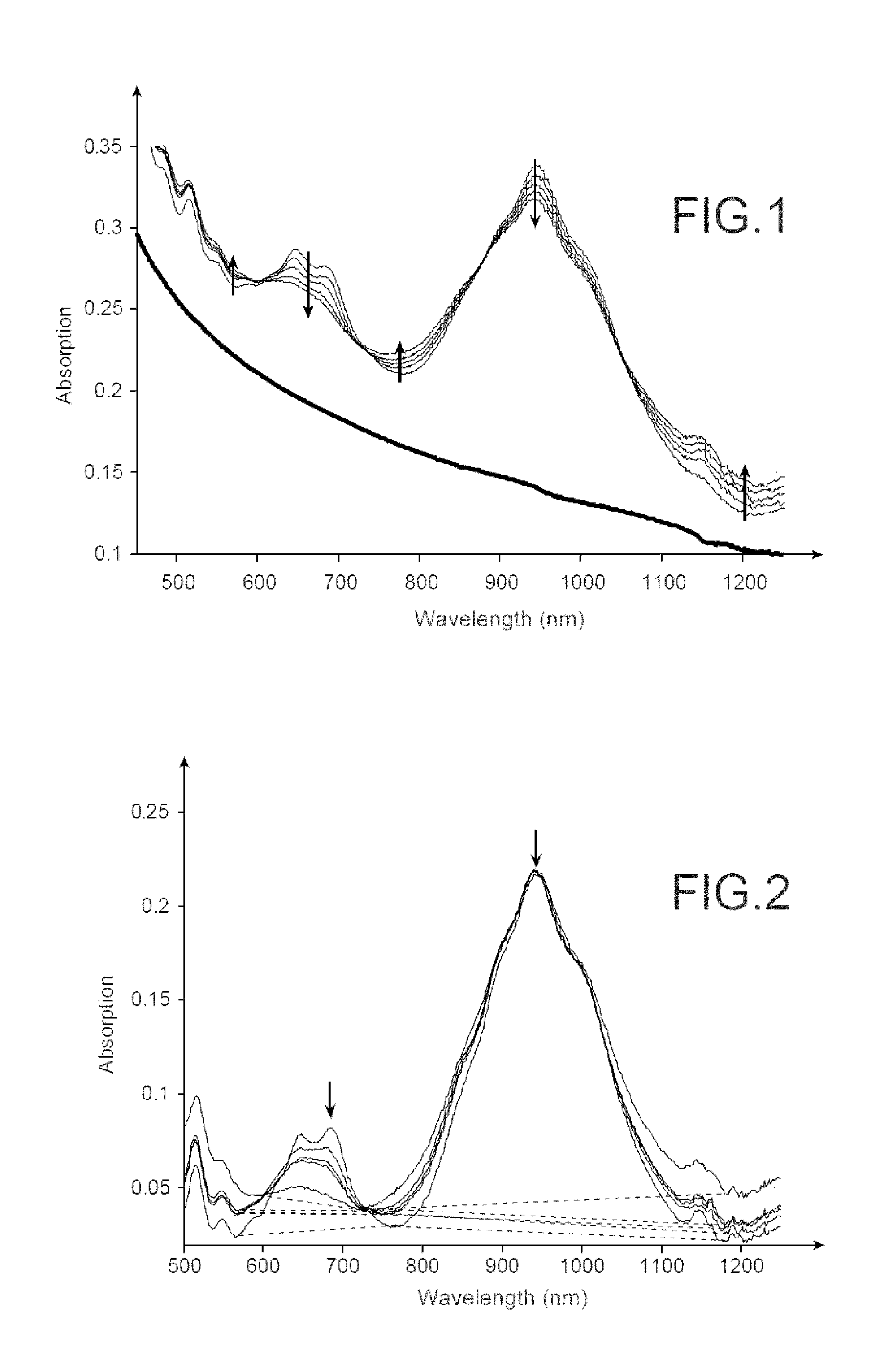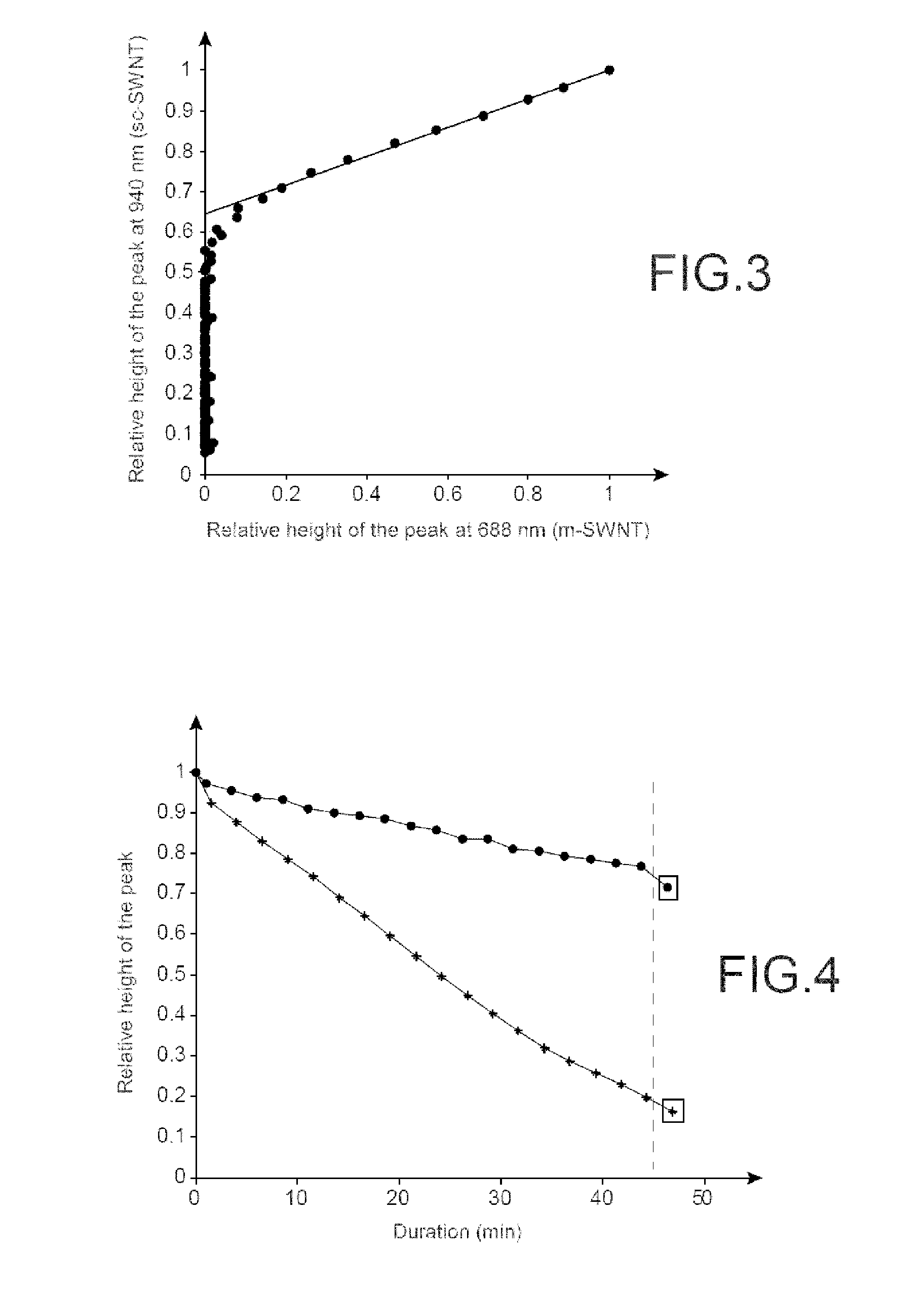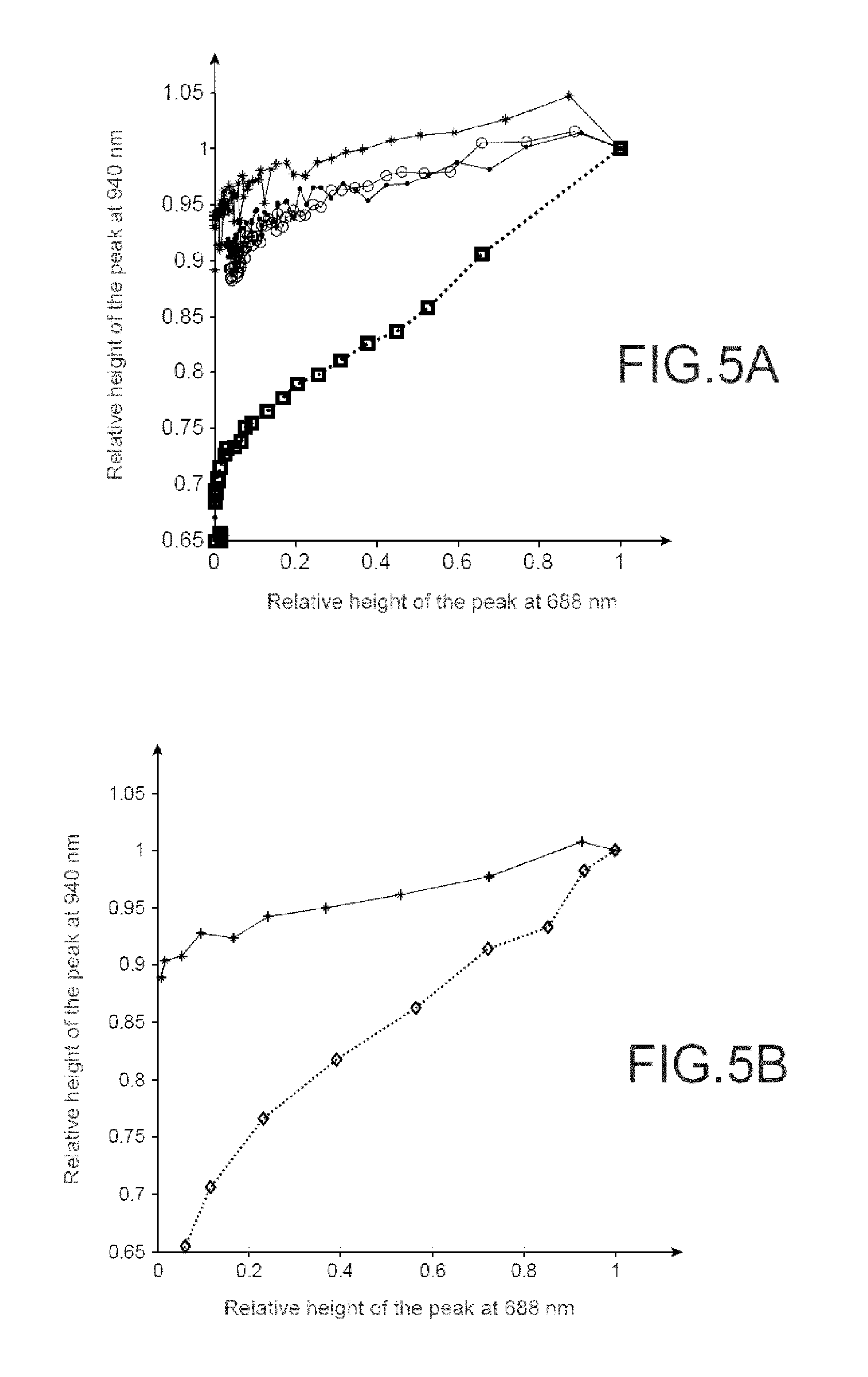Method and kit for separating metal and semiconductor carbon nanotubes
- Summary
- Abstract
- Description
- Claims
- Application Information
AI Technical Summary
Benefits of technology
Problems solved by technology
Method used
Image
Examples
Embodiment Construction
[0156]1. Preparation of the SWNT Solution.
[0157]The single wall carbon nanotubes (SWNT) are purified by treatment with nitric acid in order to remove the metal catalyst particles and amorphous carbon, and then by size-exclusion chromatography for removing the remaining amorphous carbon particles. 100 mg of crude SWNTs (purchased from Nanoledge, France) are suspended in 10 mL of pure water by treatment with the ultrasonic bath (80 W, 45 kHz, maximum power) for 30 min. The suspension is diluted in a mixture of 70 mL of nitric acid concentrated to 65% and of 30 mL of pure water. The whole is refluxed for 4 h under magnetic stirring. The suspension was then cooled in an ice bath, diluted by adding 110 mL of pure iced water and then filtered in vacuo over a filtration membrane in hydrophilic polypropylene with a porosity of 0.45 μm (PALL membranes, USA). The filtration residue is re-suspended in a solution of sodium hydroxide (100 mg of NaOH in 200 mL of pure water) by a 2 min treatment ...
PUM
 Login to view more
Login to view more Abstract
Description
Claims
Application Information
 Login to view more
Login to view more - R&D Engineer
- R&D Manager
- IP Professional
- Industry Leading Data Capabilities
- Powerful AI technology
- Patent DNA Extraction
Browse by: Latest US Patents, China's latest patents, Technical Efficacy Thesaurus, Application Domain, Technology Topic.
© 2024 PatSnap. All rights reserved.Legal|Privacy policy|Modern Slavery Act Transparency Statement|Sitemap



